
Author
Katharina Krug
CEO & Founder
Table of Contents
Share the article now!
DE
EN
DE
EN

Author
CEO & Founder
A suitable strategy is needed for CRM to succeed. It is necessary to ensure that customer relationships are successfully managed and lived in the company.
Customer Relationship Management (CRM) refers to the creation of well-defined processes to ensure that a company is adequately aligned with its customers and capable of building long-lasting relationships with them.
It helps to better understand customer needs, increase customer satisfaction, promote customer loyalty and ultimately increase sales.
For CRM to be successful, a suitable strategy is needed. It is necessary to ensure that customer relationships are properly managed and kept in the company.
By creating a strategy, companies can define their goals and priorities, design processes more effectively and ensure that all stakeholders within the company are on the same page.
There are several steps to consider when implementing a CRM strategy. First, the company should identify its ideal customers, goals and requirements in order to select an appropriate tool.
Then, data must be collected and integrated to get a consistent picture of customer relationships. It is also worth offering regular training for employees to ensure effective use of the tool.
There is no single strategy that is suitable for all companies. Every company has its own goals, requirements and customer needs that need to be taken into account.
Accordingly, the strategy must also be adapted individually. If this is then lived by all employees, the foundation for long-term corporate success is established.
A CRM strategy is a plan that outlines how to implement and achieve your sales and marketing goals. It helps to improve the relationship between your customers and your sales, marketing and customer service teams, accelerating the growth of your business.
Important: This roadmap is customised to your business, your customer data and your business philosophy.
CRM stands for customer relationship management and is an indispensable tool for sustainable business success.
CRM systems are customer-oriented sales systems that maintain the customer relationship at all levels. From sales to customer service and support to contract management and contact management.
These systems are often confused with so-called ERPs. Find out here what distinguishes these two extremely helpful software assets from each other: ERP & CRM explained!
All important customer information is collected and stored centrally. Therefore, the intelligent tools also form a basis for the measurability, optimisation and centralisation of sales processes. You can implement your corporate strategy more predictably and achieve your goals faster.
The main goal of customer relationship management is to improve the customer experience at all touchpoints so that the customer is as satisfied as possible and receives absolute added value. The result is increased sales, enhanced productivity and stronger business growth. It's a win-win situation for everyone involved.
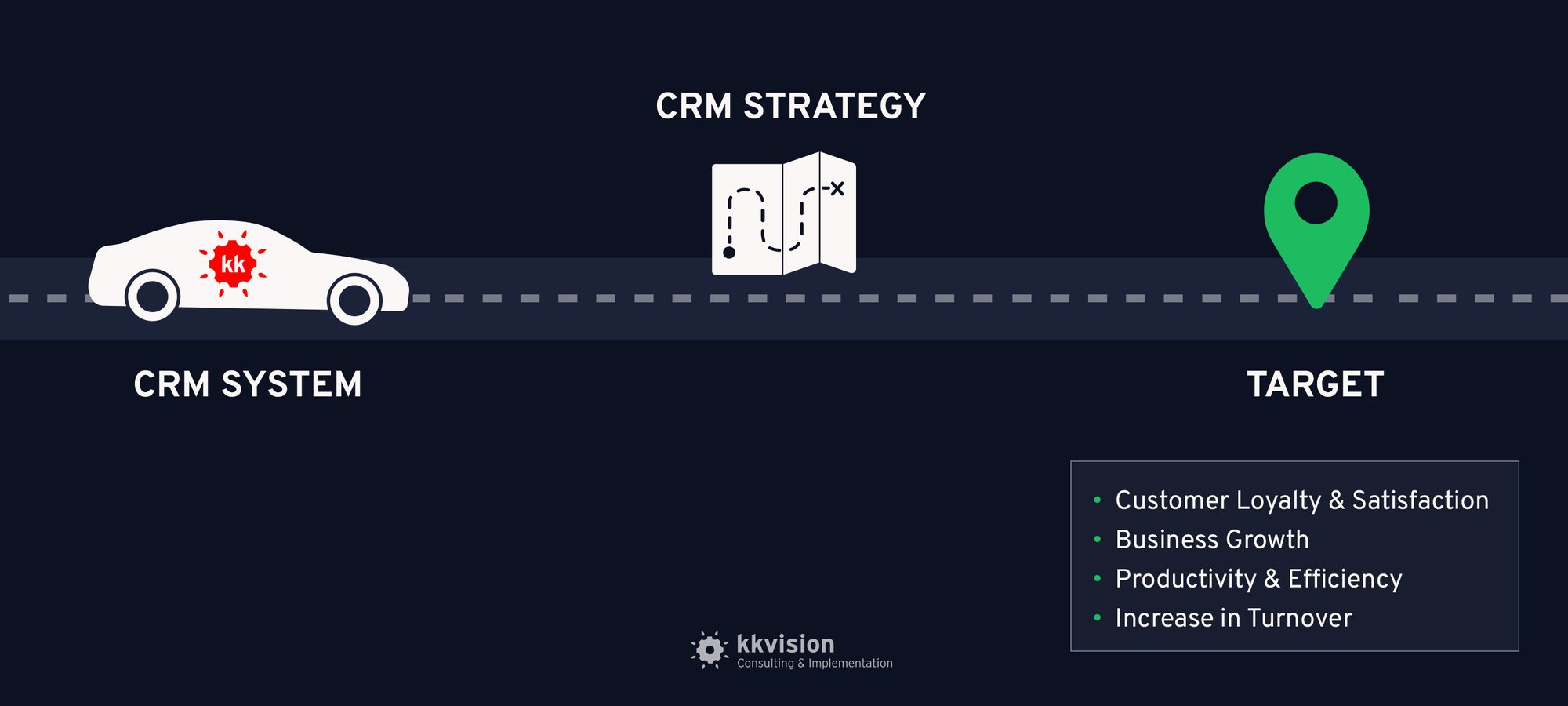
Many companies make the mistake of equating the respective CRM tool with the strategy. It is not enough to simply implement a system and expect it to do the job alone.
Rather, there must be a plan that is understood and lived by all employees. Only then can customer loyalty work. Otherwise, even the best software is just an expensive investment.
You wouldn't buy a Porsche without a driving licence. If you drive the car into a wall, you cannot complain that the car was too fast.
It is the same between CRM strategy and system. Only by using it correctly and with the right guidance can you realise its full potential.
The relationship with the customer does not end as soon as a sale has taken place. Rather, it only starts at this point. With the right customer care and a suitable strategy, you have a great influence on the growth of your company:
As you can see, modern customer relationship management brings you numerous advantages. But in addition to the right software, you need a well-thought-out strategy. On the one hand, this serves as a guiding star for practical application and, on the other, saves time, costs and nerves.
What is the well-known saying? A good plan is half the battle.
If the CRM strategy is successfully developed and implemented, it can provide various benefits to your business:
The most crucial principle in any good marketing strategy is "know your audience".
A CRM system saves you time and guesswork on how prospects and potential customers find and interact with your business online. It also allows you to store a wealth of data about current and potential new customers.
Have you ever wondered which social media platforms you will most likely be found on? Do you know whether prospects engage with your email or leave it unread? Which ad converts best?
CRM tools open up a way for you to get to know your clientele much better. This doesn't just mean names, email addresses or occupations. No - we're talking about all interactions with your brand, past orders and total spending.
Exactly the information you need to target your audience on personal preferences and cross-sell.
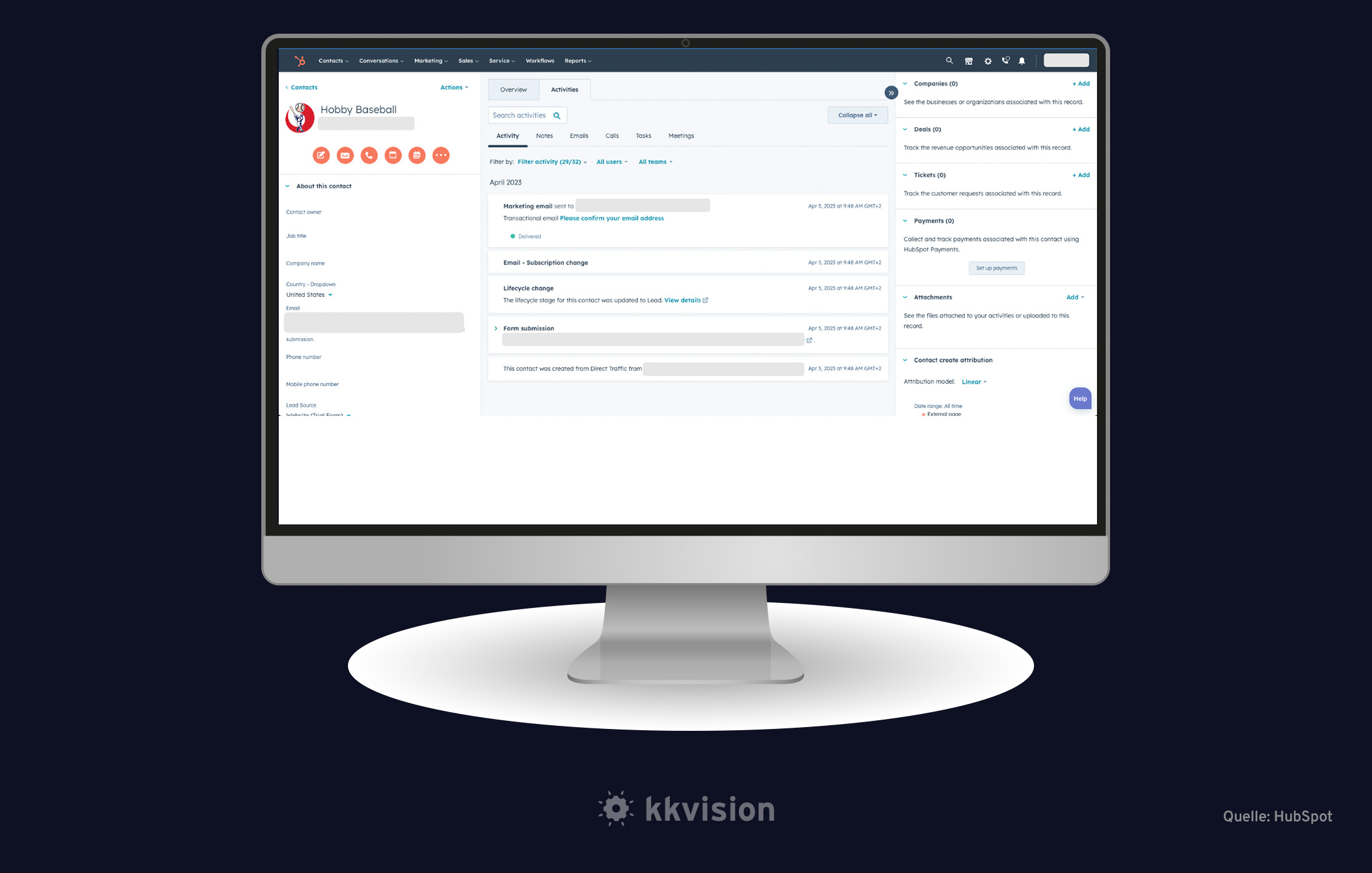
This example - an excerpt from HubSpot - is a sample for successfully tracking customer data. In addition to contact details, you can see how many products were purchased, how much money was spent in total and when the first purchase was made. Furthermore, all interactions between customers and support are visible.
HubSpot is a broad-based, all-in-one system that combines the best of CRM and marketing automation.
Of course, data storage comes with some legal requirements. Among other things, you need to ensure that your customers' privacy is respected and that only the most necessary data is stored. Make sure you have a DSGVO-compliant system and that you comply with the applicable legal provisions.
Whether getting a full-stamp card or a free coffee, we all love being rewarded for customer loyalty.
IKEA Family Card, Starbucks Rewards or cash-back programmes - big corporations have long since discovered this habit and learned to use it for their benefit. But what about you? Appropriate software is a simple and direct way to promote customer loyalty.
You can give your customers birthday vouchers or ask for a review on the recently bought product - with CRM, you can personalise and perfect the customer experience.
An example of successful customer relationship management is introducing a digital currency. By allowing your customers to collect digital points when they make a purchase, they will be more motivated to return for another visit. After all, it would be a shame if the points earned were forfeited.
.jpg?width=2000&name=kk-CRM-Strategie-Screenshot2-v2%20(1).jpg)
The Douglas company runs such a point system with its "Beauty Card". Customers can choose between the free "Beauty Card" and the "Premium Card".
With both, they can collect so-called "Beauty Points" when buying products, which can later be redeemed as a direct discount. With the "Premium Card", they also receive vouchers, extraordinary prices and free samples.
Do you want to understand your consumers' behaviour and improve interactions? You laid the foundation for this with strategy no. 1. Now it's time to become even more proactive and use this data for targeted marketing campaigns.
Here are four tips to build effective customer relationship marketing:
Studies show that emails with personalised subject lines are opened 26% more often. This is easy to understand as personalisation gives a sense of individuality and helps the email feel less like a mass message.
Undifferentiated mass marketing is rarely successful. After all, what works for one customer won't necessarily resonate with another. That's why segmenting your email list is recommended.
With the right platform, you can sort your audience by demographics, purchase history and personal preferences. This ensures that the right messages go to the right people.
Very few people want to read long emails. Therefore, formulate your emails concretely and try to get straight to the point. This will not only make them easier to read but will also boost your sales.
This may sound counterproductive at first, but it is hugely important. By making it easy for your user to unsubscribe from your email newsletters, you remain DSGVO compliant on the one hand and inspire trust and confidence in your brand on the other.
It also has benefits for your business - by weeding out inactive users, you make room for more lucrative prospects.
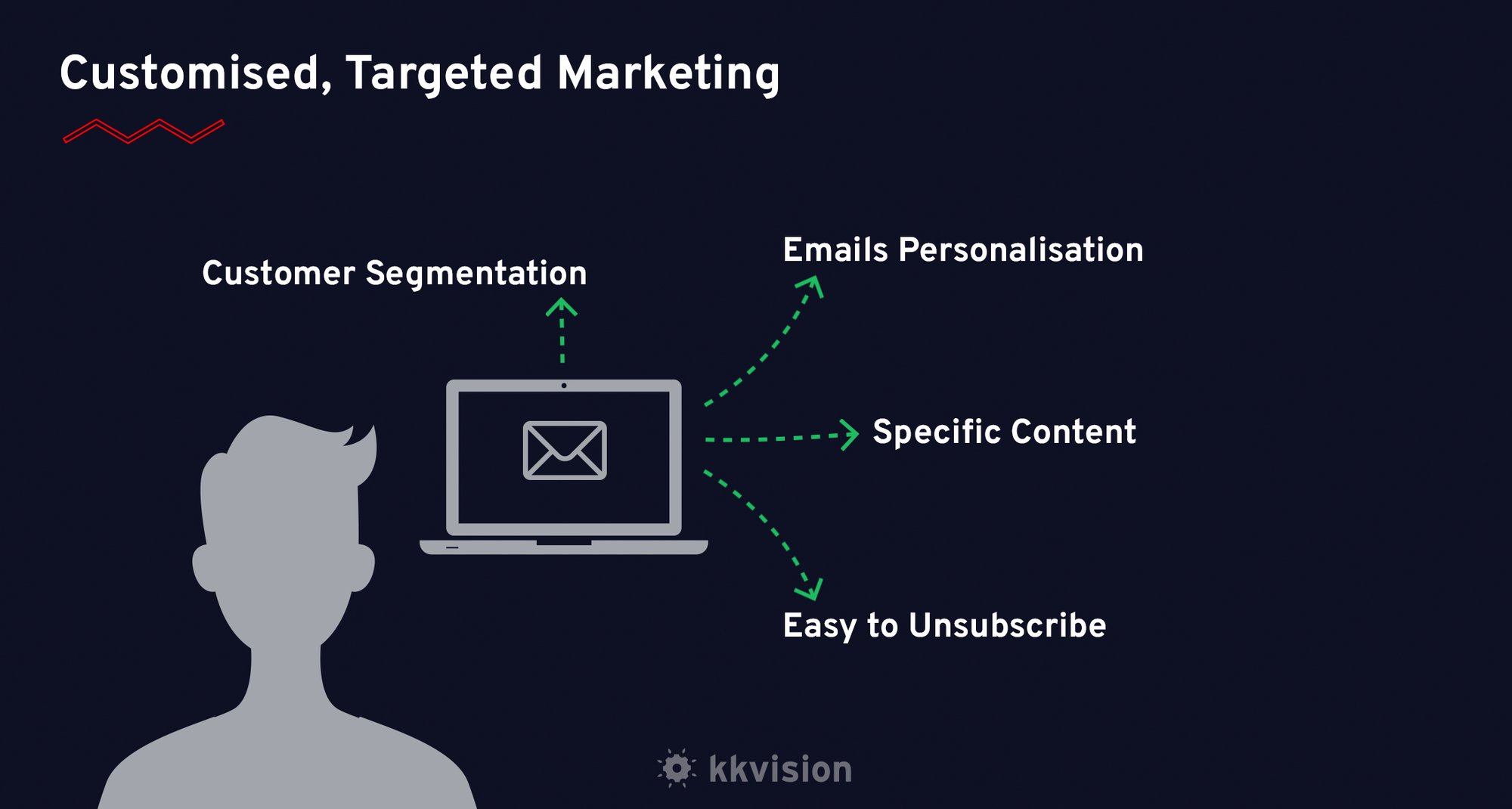
As your business grows, you will enjoy many changes - a negative image will not be one of them. Therefore, you should avoid making serious mistakes when communicating with your customers.
Mishaps happen quickly in everyday work: by mistake, a customer is contacted who has long since stopped this, or the divorced wife continues to be addressed with the name of her ex-husband. These pitfalls can cast a negative light on your company.
Fortunately, such mistakes are avoidable with the right tool. By unifying your data in a single system, duplicates are avoided. Customer data is easier to manage, cleanse and regulate - and you can be sure that you are working with up-to-date information.
CRM software helps you generate reports on your customer base and the performance of your business.
These reports can be provided both internally and externally to increase credibility and transparency to various stakeholders. This allows you to present facts stylishly and show the health of your business.
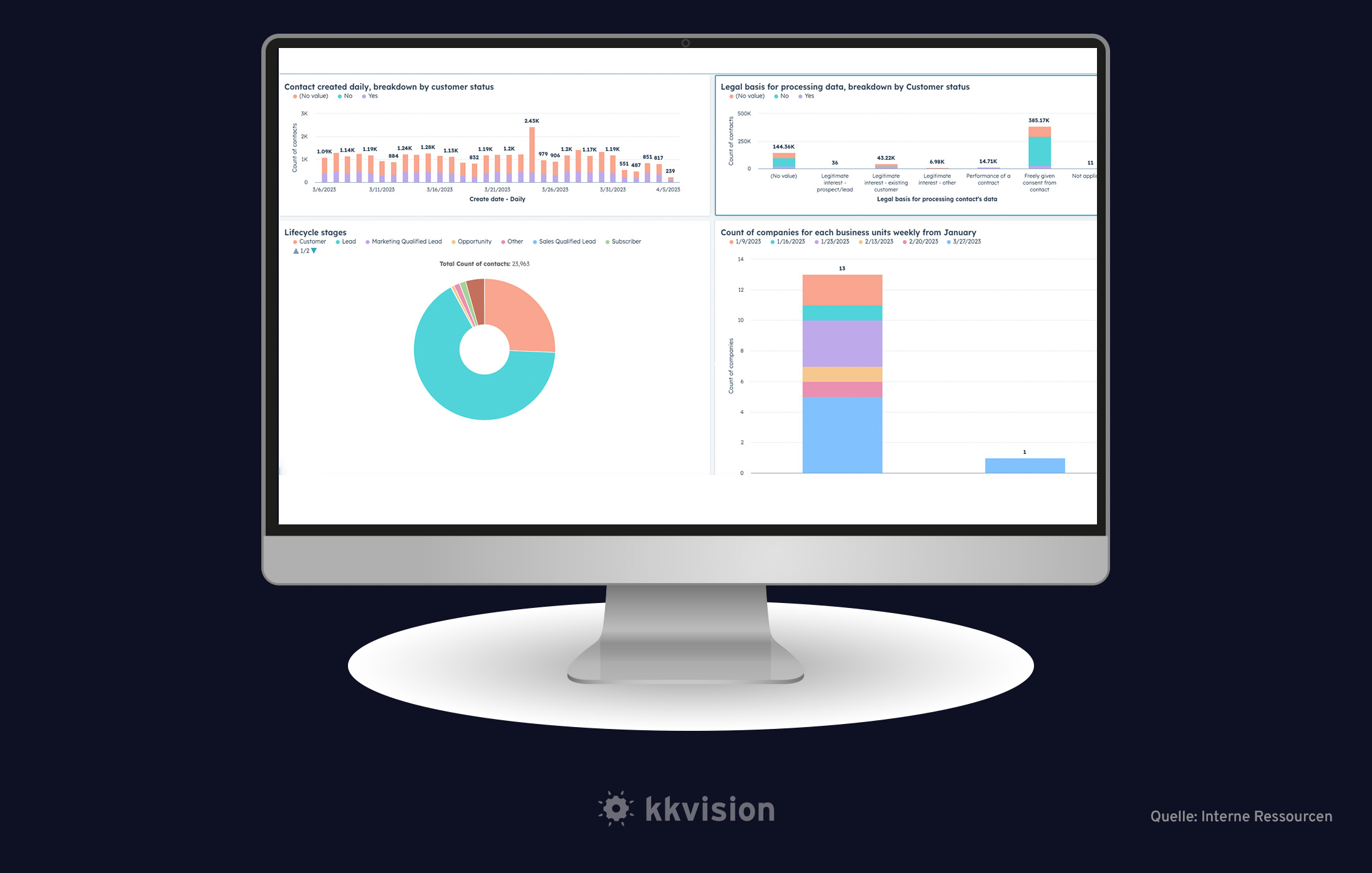
By bringing all your business and customer data together in one place and allowing you to manipulate it through a series of online dashboards, a new level of data analysis is opened up to you. You can easily create reports, export them easily and read them without complication.
To better align your sales and marketing efforts with your customers, it is helpful to understand both professional and personal relationships. To build deep customer relationships, more than management is needed. You also need to be able to identify and interact with networks.
The right programme will provide a holistic view of your customer database, allowing you to identify where vital (and potentially profitable) connections exist between your customers.
For example, a targeted marketing campaign is worthwhile if your offer is also of interest to a business customer's supplier.
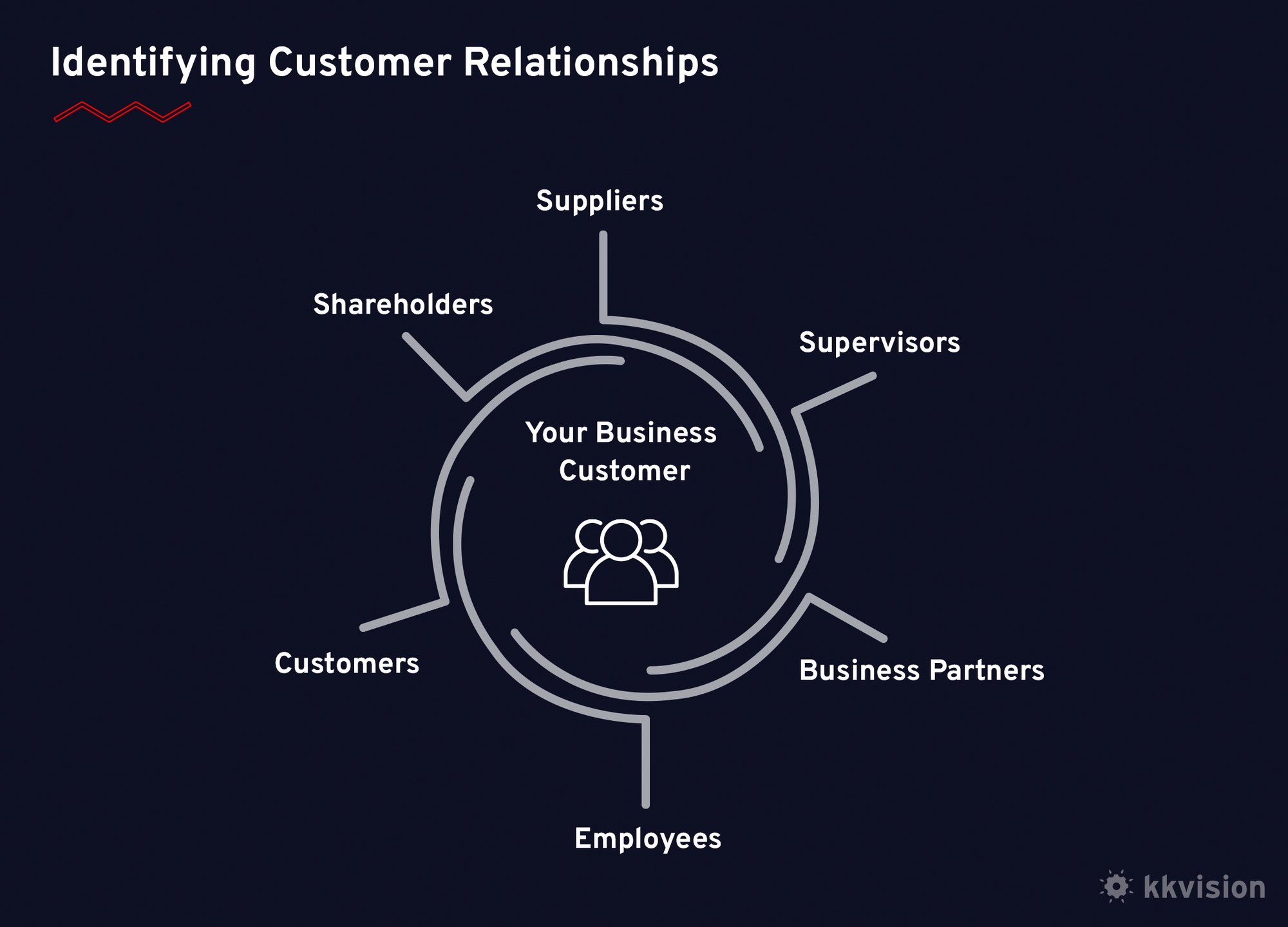
Ensure that your customer service and marketing departments work hand in hand and encourage knowledge sharing between the teams. Close collaboration is essential to improving the customer experience.
Of course, digital tools bring many benefits to your sales team and marketing department. Nevertheless, keeping your customer service up to date is essential to ensure optimal performance.
Fortunately, with the right software, this is easy. It transmits information about all customer interactions from your sales and marketing team directly to your customer service team. This allows them to see what happened quickly.
After all, there's nothing more annoying than being put on hold, passed from one customer service representative to the next and having to explain the same issue several times.
Avoid falling into this trap and use a CRM system instead. Thanks to the unified, internet-based user interface, your staff will be well-equipped to handle problems, enquiries and complaints professionally and efficiently.

Creating unique, valuable content for your website and social media can add a whole new dimension to your services. Your customers will be delighted.
Whether it's a blog, an innovative social media campaign or a downloadable e-book, offer your users something they can't find elsewhere.
Publishing unique content in formats such as videos, infographics, case studies, white papers, or tutorials is an excellent way to position yourself as a subject matter expert in the market.
A CRM system supports you in this in several ways. Besides providing a platform to create, curate, plan and publish content, it also integrates it with your social media accounts and simplifies the management of your community.
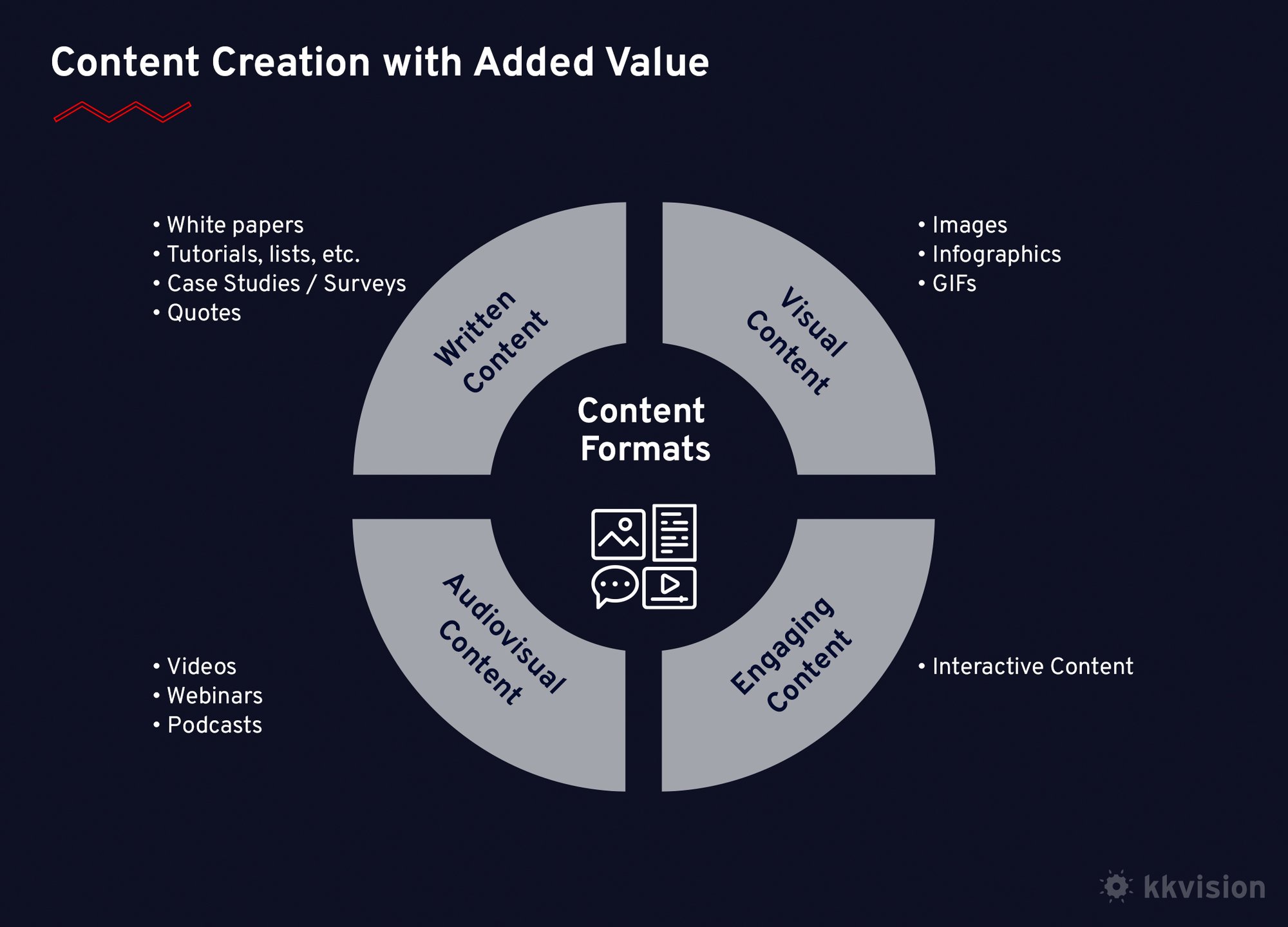
A CRM tool can improve employee empowerment in many ways. It provides data, eliminates islands of data, encourages more efficient team collaboration and adds a layer of transparency to every interaction your sales, marketing and customer service teams have with customers.
Not only will your employees feel more accountable and independent, but they will also be more confident and make better decisions. Successful strategies focus on the people behind the business, not just the bottom line. And this should also apply to your strategy.
CRM strategies of big companies can teach a lot about customer engagement. Here are two examples inspired by the biggest and most successful companies in the world - Amazon and Apple:
Amazon has a successful strategy based on its premium subscription service called Prime. Prime personalises the entire buying process, for example, by sending personalised product offers or encouraging customers to return and complete a forgotten shopping cart. Amazon uses many techniques to promote customer loyalty and can thus serve as a source of inspiration.
Apple, on the other hand, takes an entirely different approach. Following the vision of founder and innovator Steve Jobs, Apple rejects the strategies of traditional market research and customer loyalty programmes. Instead, the company builds its brand around its well-known products. The focus is on the interaction between Apple's customers and innovative inventions.
.jpg?width=2000&name=kk-CRM-Strategie-Screenshot1-v2%20(1).jpg)
Thousands of videos exist in which Apple users enthusiastically unpack their new iPhone or Apple Watch. Another example is the physical Apple Stores. Meeting points where potential customers can playfully explore the range without feeling compelled to buy.
No two companies are alike, so no universally applicable CRM strategy can exist. Suppose you trust a template initially designed for a completely different company. In that case, you will not only fail to achieve results but also waste time, effort and money.
So, from the beginning, you should rely on a strategy specifically tailored to your company. Take into account your customer data, goals and company philosophy. Involve your employees in the development and live the strategy throughout the company - only then will the concept bring the desired improvement and long-term success.
The following six steps should be considered when developing an individual and successful plan:
Of course, everyone who tackles such a big project wonders whether the investment will be worth it in the end or whether it is just wasted effort and money. In fact, there is no simple answer to this question - because success basically depends not only on the right design and software alone but on everyone involved in the process.
Customer Relationship Management is a path you must take if you are looking for ways to achieve better sales, more efficiency and productivity, or loyal customer bases.
As Albert Einstein once said, "The purest form of insanity is to leave everything as it is and hope that something will change."
Customer relationship management is and will be the key to long-term business success regardless of the industry. Numerous large international companies are already successfully using this concept for themselves. Medium-sized and small companies are increasingly following suit.
It is high time if you still need to implement CRM in your company. The competition is not sleeping. With the right strategy, the right tool and a team of experts at your side, you can keep up with the times.
We are happy to offer you our active support. From the first considerations, the selection of the right tool, the strategy creation to the implementation and daily use. Together, we will take your marketing to a new level.

About the author
Recently, kkvision implemented a comprehensive digitization project with the catering company Last Exit, from which the company benefited greatly right from the start. Find out here how a catering...
Modern companies can hardly do without CRM and Marketing Automation. But where do the boundaries actually lie, and where do they blur? How can both systems be combined and the optimum results be...
ERP & CRM form the basis of a digitalised company. In this article, you will learn what is behind these terms, which factors need to be taken into account when introducing them, and how they can help...